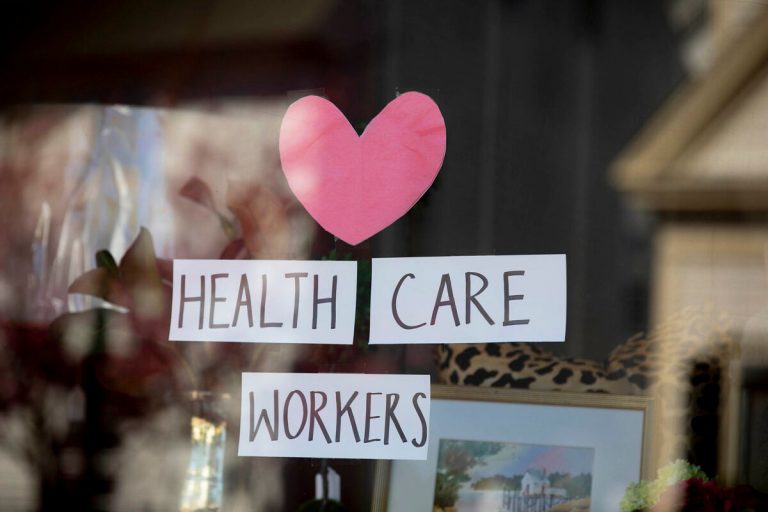The initial surge of COVID-19 patients in Boston-area hospitals has passed, but the memories of caring for them will forever remain with physicians involved in that care. We asked seven physician-scientists from the Broad Institute, who are also Harvard Medical School instructors, to talk about what they learned from their time helping COVID-19 patients, and how their experiences have informed their research.
Deb Hung
Core faculty member, co-director of the Infectious Disease and Microbiome Program at Broad, infectious disease physician and attending critical care physician at Brigham and Women’s Hospital, professor of genetics and associate professor at Harvard Medical School
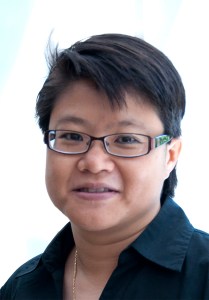
The thing that struck me the most, from the experience of treating COVID-19 patients, was how heartbreakingly dehumanizing it was. Patients weren’t allowed to have visitors, and those intubated and sedated in the ICUs couldn’t talk to you. As a physician, I only knew a name and the medical parameters associated with the individual. During usual times, we get to know a little more about the patient — the personal and human side, with families and friends visiting. But with COVID, it was heartbreaking to see people dying alone, and their families couldn’t come in.
On top of that, we, as physicians and healthcare workers wearing protective equipment and face masks, feel like there is another kind of barrier between our patients and us. Quite frankly, because everyone is wearing a mask in the hospital, even that’s dehumanizing among the people you know and your colleagues — you can’t even exchange a smile.
What was challenging, from the scientific side, is that everyone was so desperate to do something, to try anything to help the patients. It was crazy and frustrating, but everyone felt this acute sense of desperation.
As things have calmed down a bit, there is now more time to evaluate a lot of data that has been collected to better assess what interventions are actually effective. But there is still a lot of work to do and we still have a lot to learn.
Michael Gillette
Senior group leader in the Proteomics Platform at Broad, attending physician in pulmonary and critical care medicine at Massachusetts General Hospital (MGH), assistant professor at Harvard Medical School
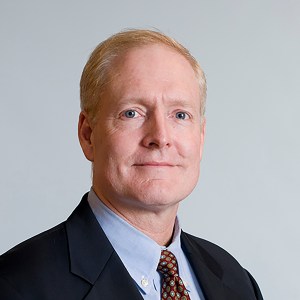
One thing that was striking during the first surge of the pandemic was the number of critically ill patients relative to hospital capacity. At MGH, we got up to about 180 patients requiring ICU-level care. To put that number into perspective, our main medical intensive care unit, where I spent most of my time during the last couple of months, is an 18-bed unit.
To accommodate the influx, our medical-surgical intensive care, surgical intensive care, cardiac intensive care, neurointensive care, pediatric intensive care, and burn units all were converted to adult COVID-19 intensive care units. There were two general medicine floors in one of our buildings that had the necessary physical infrastructure and also got turned into COVID-19 intensive care units.
Our conventional ICU ventilators were in short supply, and other equipment was pressed into service: travel ventilators, operating room ventilators, and the like. Dialysis machines used for renal replacement had to be circulated between patients. Even ECMO (extracorporeal membrane oxygenation) circuits that oxygenate and scrub CO2 from the blood outside the body to allow the lungs to rest were in full utilization.
With that sort of patient census, we didn’t have the number of pulmonary or anaesthesia critical care doctors we needed. It was extraordinary to watch all kinds of care providers stepping forward to provide care for COVID-19 patients outside their usual roles. The number of people who worked extraordinary hours under very stressful circumstances, dealing with a disease that nobody understood very well, in many cases operating outside of their area of domain expertise, and did it with a positive attitude, was remarkable and heartwarming.
The biggest takeaway was probably the degree to which the pandemic highlighted all sorts of fundamental inequities in our healthcare system and our social structure. Not that one isn’t aware of them, but there hasn’t ever been anything in my lifetime that has made it this impossible to ignore.
After working 90- or 100-hour weeks in the hospital, it wasn’t easy to focus on research, which during other times of the year is my principal occupation. My proteomics group at the Broad has a translational research focus where I help scientists understand the ramifications of their work for clinical applications. We make sure that we are focusing our questions in the most meaningful way and serve the patients that the research ultimately is intended to serve.
Pradeep Natarajan
Associate member of the Program in Medical and Population Genetics at Broad, director of preventive cardiology at MGH, clinical cardiologist at the MGH Cardiovascular Disease Prevention Center, assistant professor at Harvard Medical School
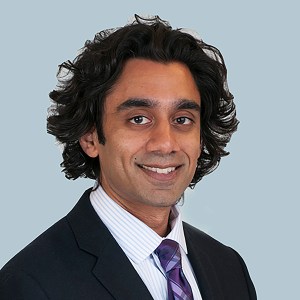
During the first COVID-19 surge in Massachusetts, we converted one of our inpatient cardiology units at MGH to a COVID-19-specific cardiology unit. During this time, I was on clinical service, supervising that unit during this first surge of COVID-19.
The overwhelmingly large knowledge gap that physicians were dealing with in the face of this public health emergency was immediately apparent as I began treating patients with COVID-19. We don’t have multiple high-quality randomized controlled trials to go back and immediately reference in order to figure what’s the right thing to do for our patients. We are depending a lot on clinical intuition from experience with other acute respiratory processes, rapidly gaining experience, synthesizing and vetting scientific literature in real-time, and then immediately applying it to patients with COVID-19. None of us learned about COVID-19 in medical school. There are commonalities with other respiratory illnesses, but there are a lot of unique features as well.
It has been remarkable to see the resiliency and the adaptability of our local health systems to deal with this once-in-a-century pandemic. I certainly can’t be prouder of my colleagues — the nurses, physicians, technicians, and administrative staff — rallying together to address these needs.
Marcia Goldberg
Associate member of the Infectious Disease and Microbiome Program at Broad, infectious disease physician and professor of medicine and of microbiology at MGH and Harvard Medical School
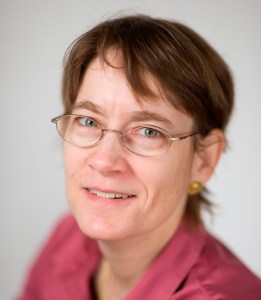
I participate in remote analysis of hospitalized patients in two capacities: First, I provide advice to the primary caretakers caring for COVID-19 infected patients. In essence, I respond to specific questions from primary caretakers that may relate to the management, diagnosis, and/or treatment of these patients. Second, I am part of an infectious diseases team that interprets the testing of inpatients who could be infected with COVID-19, including whether an individual is infected and, for infected individuals, when it is safe for them to come out of isolation.
What struck me the most with the patients was the rapidity with which they might go from having relatively mild illness to severe and life-threatening illness.
There are two things that stay with me from this experience: when we work together, we can transform healthcare in response to any threat; and how unpredictable and fragile life is.
My indirect interactions with patients have afforded me a small window into the enormity of their suffering and isolation, which highlight the importance of identifying new therapeutics. I believe the best way to achieve this goal is to improve our understanding of the underlying mechanisms of the disease. This is what drives me to work harder and harder on our research into the immune response to COVID-19.
Anna Greka
Institute member at Broad, director of the Broad’s Kidney Disease Initiative, associate physician in the Renal Division in the Department of Medicine at Brigham and Women’s Hospital, associate professor at Harvard Medical School
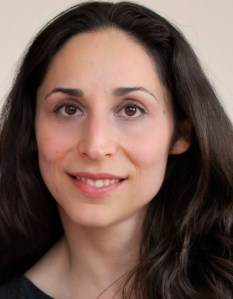
I was not scheduled to be on service during the time of COVID-19, but I decided to volunteer in case they needed my help, as either a general physician or kidney expert. It turns out I was needed as a kidney specialist because, in addition to the obviously horrific lung disease, we started seeing an influx in COVID-19 patients facing kidney failure and in need of dialysis machines.
The most difficult thing in caring for patients with COVID-19 was the inability to spend a lot of time with them. It was really strange not to be able to touch and communicate with them. I would say the real unsung heroes in this case are the nurses, and in particular, the dialysis nurses, who had to be in the room in full PPE for the entire time that the dialysis procedure is taking place. Anybody who’s been in PPE knows, it’s extremely hot and very uncomfortable to be in that for hours. Because there were no guests allowed, the nurses were the only source of comfort for many patients. The nurses really went above and beyond, and I think it’s important that they’re recognized for their sacrifices.
The other thing that was very poignant from my time on service was having to think about what I might bring home to my family, which isn’t something that I’ve had to think about often in my career. But so many things were unknown at the time. We were all doing these elaborate decontamination procedures when we got home, every single day, to make sure that we didn’t expose our family to anything. I think that also added to people’s stress.
On a more positive side, there was an immense sense of camaraderie among physicians and nurses and respiratory technicians and other hospital staff, like our valet staff and the service staff who were manning the stations for dispensing the masks and the shields. People were really trying to be there for each other, and that helped everybody push through and feel not alone.
My time on service also stimulated me to think outside the box about ways that I could help as a scientist. I think the main thing that we learned from this is that science is the only way forward. We can overcome any difficulty that humanity faces using science and technology, and I think there’s a renewed understanding that that’s humanity’s best hope.
Benjamin Gewurz
Associate member of the Genetic Perturbation Platform at Broad, infectious disease physician at Brigham and Women’s Hospital and Dana-Farber Cancer Institute, assistant professor and associate director, virology program, Harvard Medical School
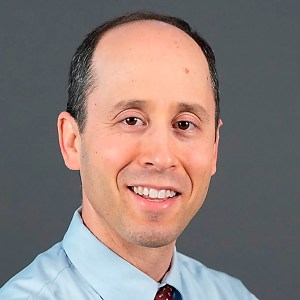
During the March through April peak, I volunteered for 10 very busy daytime and overnight shifts on the hospital COVID-19 beeper.
These were interesting and challenging shifts, with as many as 80 calls per day coming in from worried nurses, residents, and attending physicians. As testing capabilities and policies on testing and PPE were rapidly developing, many questions came in from all areas of the hospital. For instance, how many tests need to be done and how far apart should they be to clear a patient for surgery that requires general anaesthesia? What to do with a patient admitted from a rehab facility whose roommate was rumored to have COVID-19?
Early on, a major role was to work with physicians to decide how to deploy limited COVID-19 RT-PCR testing resources, ration precious PPE, and interpret test results as assays were still being optimized. We also had to help decide how best to allocate negative pressure rooms and whom to triage to rapidly expanding COVID-19 wards.
We need to be more prepared for the next pandemic. With increased air travel, population growth, climate change, and high-risk agricultural practices, we are clearly susceptible to another pandemic in the near future, perhaps even with another type of coronavirus. Not only do we need to be better prepared to test and trace earlier the next time, but also to have adequate PPE stockpiles. We should also be thinking about developing compounds against host and viral targets that can be rapidly deployed.
My experience with patient care has highlighted things that we can do to be better prepared for the next pandemic, in terms of staying ahead of the curve to develop diagnostics, small molecule and antibody therapeutics, and vaccines that can be more rapidly deployed. Seeing how frightening, dangerous and disruptive to society a pandemic virus is — and realizing how helpless we were early on, without evidence to guide treatment strategies or resources to adequately test—has been quite motivating for me in my research on the virus.
Roby Bhattacharyya
Associated scientist in the Infectious Disease and Microbiome Program at Broad, attending infectious disease physician at MGH, and instructor in medicine, Harvard Medical School
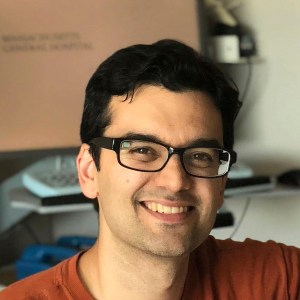
During the two weeks in April that I was on service, the surge was really building in Massachusetts, and by the end, half of our thousand-bed hospital was COVID-19 patients. Which is crazy — that this thing that had infected its first human less than six months earlier was suddenly the majority of what we were caring for.
At MGH, we had to create five new ICUs from floors that were normally regular medical wards or perioperative care areas. This was incredible. I don’t think anybody at MGH had seen the need for surge capacity like this before. The hospital had spent months planning for it, and it went off without a hitch from my perspective as a consultant, thanks to the hard work and planning of a lot of people.
The other thing I remember about the time leading up to my two weeks on service in April was how eerie it was to hear from doctors in Italy and Spain, then Washington, then New York City about how slammed they were, when our hospital was actually quieter than usual because we had cancelled elective surgeries in anticipation of the surge. People were using the analogy of when the ocean is sucked out away from the beach before a tsunami hits — eerie calm in the moment with a strong sense of foreboding. And sure enough, the surge came. Fortunately, with the preparation measures the Boston area and MGH took, it stretched us to the limits of our capacity but not past.
I’ve reflected since being on service about how much we’ve benefitted from real-time science compared to the original SARS in 2003. I was in grad school when SARS hit, and had forgotten that we didn’t even learn that it was a virus until after it had been controlled. (There was speculation at the time that it was caused by a specific kind of intracellular, unculturable bacteria.) Which meant that there was no diagnostic test possible in real-time, so diagnoses had to be phenomenological.
There have been many challenges with the real-time science around COVID playing out in the news and public sphere, and diagnostics were initially delayed and remain more limited than anyone would like, but there has been a lot of progress too. It’s easy to lose sight of how different this pandemic would have been if it had hit 15 to 20 years ago.

